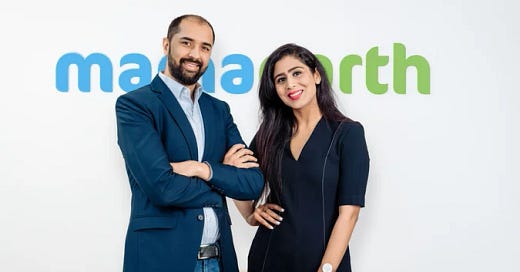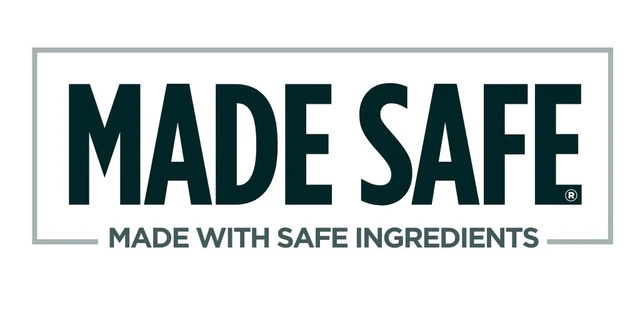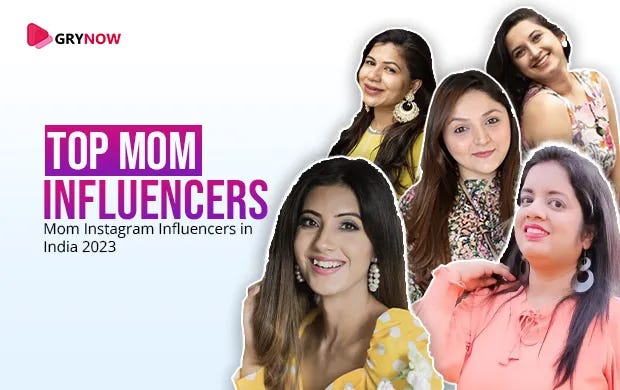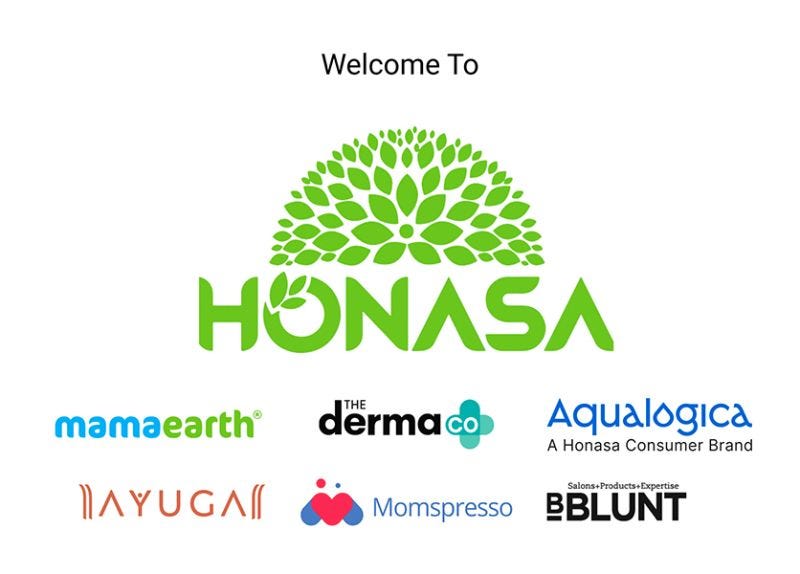How did Mamaearth scale?
This week I am curious about How did Mamaearth scale? Mamaearth is an Indian personal care brand that started in 2016 and is also Asia’s first Made Safe certified brand1. A Made Safe certification is given to products made by avoiding 6,500 banned substances, thereby eliminating harmful effects to both humans and the environment.
India is a price-sensitive country and is dominated by both Global and Indian FMCG players like HUL, P&G and ITC to name a few. Starting an FMCG company is non-trivial and requires a lot of capital to setup manufacturing, marketing, operations, distribution along with regulatory requirements.
So how did Mamaearth find a gap in the market and grew to be a company valued at $1.5Bn in just seven years?
The founders and the origins
Mamaearth was founded by husband-wife duo of Gazhal and Varun Alagh. At the time of founding, Gazhal was working as an Artist and Varun was working at Coca Cola as a Brand Manager. When Gazhal and Varun became parents to their first born son Agasthya, they discovered that most baby care products available in India contained ingredients with carcinogenic effects2. Moreover when they used these baby care products on Agasthya, it worsened his already existing Eczema, which is a skin condition is a common skin condition that causes itchiness, rashes, dry patches and infection3.
As a consequence, the couple would ask their friends and family to bring toxin free products from the US. This experience of bringing products from the US was not ideal and they wondered why toxin free products are not available in India? Upon further research, they found that most ingredients used in these toxin free products were readily available in India and then stemmed an existential question of why not source these ingredients and manufacture these products themselves?
How did they start?
Varun and Ghazal made a few sample products with toxin free ingredients and went to talk to their potential customers4. They discovered that customers were not aware of harmful ingredients such as Sulphates and Parabens and witnessed a massive awareness gap among their target segment, which was moms wanting toxin free products for their new borns. Moreover they also had a credibility problem to prove that their products were actually toxin free and safe for children.
This credibility concern led to the founders working with a non-profit called Madesafe, which certifies that the products are safe for both humans and the environment. Hence the brand Mamaearth, which was Asia’s first Made Safe certified brand was born.
The Mamaearth website initially contained only educational content about their brand, their quality and the harmful effects of ingredients in the other widely used baby products. All their orders were sold exclusively on Amazon Launchpad as they hadn’t yet built the D2C capability in-house5.
How did they reach their target segments?
The founders realized that parents of 0 - 3 month old babies relied on doctors for advice, but parents of 3 - 12 month old babies relied on other parents for advice6. Also limited funds meant that the founders did not have money to spend on advertising and would have to count on word of mouth to promote their brand.
This constraint prompted Gazhal to reach out to blogger moms, where she would gave them free samples to try the products. These moms would in-turn share their experience in using Mamaearth products on their blogs and this in-turn created brand awareness for Mamaearth. Gazhal also talked to hundreds of moms on what worked and what did not to make constant make improvements in their products.
Moreover, since they were creating a purpose driven brand, their initial customers were people who were also champions of the toxin free purpose and they would further advocate Mamaearth within their circles.
The Mamaearth playbook
The founders were talking to customers to not just get feedback on existing products, but also to understand what additional products do their babies require. Hence Mamaearth introduced other toxin free products like insect repellants, sunscreens and also products like colic relievers which were made with traditional DIY Indian ingredients.
The founders also witnessed that moms loved the brand, the products, the purpose and the typical lifecycle for a baby is limited and hence they made a decision to produce toxin free products for moms and subsequently for dads. They made a lot of mistakes and some products and categories like herbal teas failed as well. Deviating from personal care brand confused customers and hence the founders made a decision to just focus on personal care products.
Adding to the above point about building loyalty through purpose, Mamaearth customers are passionate champions of using toxin free ingredients and also caring for the environment. Their entire packaging was recyclable and they would plant a tree for every product purchased by the customer. They would also send an Email with geotagged location of the trees panted and send follow up Emails sharing pictures of how the trees were doing.
Along with developing their products, Mamaearth founders were also building D2C capabilities as selling on marketplaces like Amazon limited specific customer insights. Leveraging these insights, Mamaearth started targeting customers in a much more personalized manner such as sending weather specific advertisements. Also, the COVID-19 pandemic was a huge boost as customers started buying more products online and were looking for such toxin free products in difficult times.
What’s next for Mamaearth?
The parent company of Mamaearth, Honasa Consumer Ltd. is creating a house of brands with brands such as Dermaco, Aqualogica, Ayuga where the aim is to use the Mamaearth playbook to create large purpose driven brands. They also aspire to use the playbook and see how they can scale similar purpose driven brands outside of India too.
I hope Mamaearth does well as a publicly listed company as traditionally D2C brands haven’t done well in public markets and even VC money for D2C brands is drying up7. If they are able to execute well, this paves the way for similar purpose driven brands to not only scale well in India but also to dominate globally.
— —
So this week, I was curious about How did Mamaearth scale? Do subscribe to my blog to read about different things I am curious about every week. My name is Kushal and I am a part-time Product Manager and a full-time hustler. I work as a Senior Product Manager at SoFi and I also do writing, quizzing, podcasting and standup comedy for fun.








